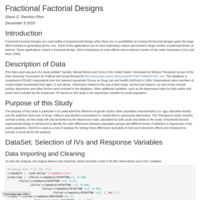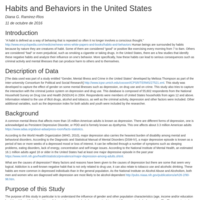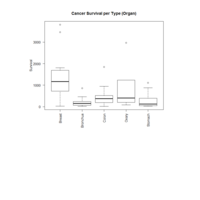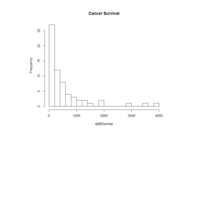Recently Published

Taguchi Designs
Taguchi Designs are experimental designs made to ensure desired or "optimal" performance, mainly on product and process design. This tool was explored for behavioral study developed on Depression Index for the Youth Population. The data used was part of a study entitled “Gender, Mental Illness and Crime in the United States” developed by Melissa Thompson as part of the Inter-university Consortium for Political and Social Research [2]. This database is composed of 55,602 respondents from the National Household Survey on Drug Use and Health (NSDUH) in 2004.

Project 3: Fractional Factorial Designs
The study examined depression index for the youth population using fractional factorial designs. Four factors were involved in the analysis: gender, cigar daily use, alcohol and drug use levels. The resulting fractional factorial was composed of a Resolution III, 2^(6-3) design, where 8 runs were generated. The fitted regression model was also developed and ANOVA results indicated a significant difference among gender population and high levels of addiction.

Hypothesis Testing, Housing Sales Price
A study developed from the Housing data of the city of Windsor was used to test the factors that affect sales price of houses in urban areas. Null Hypothesis testing techniques were performed where the response variable was price. Two factors were analyzed in the study: the number of bathrooms and the preference in neighborhood. Confidence Intervals and Resampling Techniques were used as alternatives to detect significant differences from the different groups according to number of bathrooms. The significance level selected was 0.05 and the Power was 0.90. Results have shown that the price of houses differ significantly when changing from 1, 2 or 3 bathrooms.

Habits and Behaviors in the United States
Analysis of negative habits or addictives (ie. drug use, tobacco and alcohol consumption) are seen to negatively affect the health of the Americans. A survey that captured 55,602 respondents from the National Household Survey on Drug Use and Health (NSDUH) analyzed the relationship between gender, criminal activity and mental illness in the United States. This database was used to explore the significant differences among the population, based on demographic and addiction-related variables. ANOVA was used to test the statistical significance of these differences where the response variable was depression.

